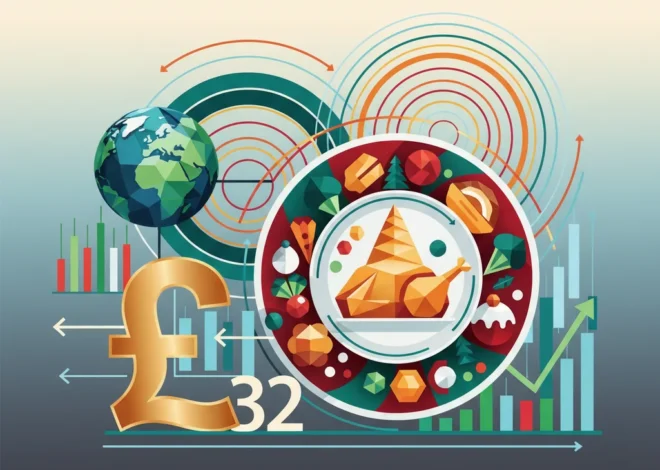The Great Fintech Reckoning: Has the Bubble Finally Burst?
For the better part of a decade, the world of financial technology, or fintech, has felt like a gold rush. Venture capital flowed like water, valuations soared to astronomical heights, and slick new apps promised to revolutionize everything from banking and payments to investing and lending. The narrative was intoxicating: legacy banks were dinosaurs, and these nimble, tech-savvy upstarts were the future of finance. Investors, swept up in the euphoria, chased growth at any cost, pouring billions into companies that often prioritized user acquisition over profitability.
But as a prescient letter to the Financial Times pointed out, the music has slowed, if not stopped entirely. The era of easy money has ended, and a harsh new reality is setting in. Valuations are being slashed, funding rounds are drying up, and the once-unquestioned mantra of “growth, growth, growth” is being replaced by a more sober focus on the bottom line. This begs the critical question for investors, industry leaders, and anyone with a stake in the modern economy: Is this the end of the fintech bubble?
The short answer is yes, the bubble has burst. But the longer, more nuanced answer is that this isn’t the end of fintech—it’s the end of the beginning. This is a necessary, albeit painful, market correction that will ultimately separate the enduring innovations from the fleeting hype.
The Anatomy of a Tech Bubble: How We Got Here
To understand the current downturn, we must first appreciate the perfect storm of conditions that inflated the fintech bubble. The primary driver was a prolonged period of historically low interest rates following the 2008 financial crisis. With capital cheap and abundant, investors were willing to make high-risk, long-term bets on disruptive technologies. The potential for a 100x return on a company that could unseat a major bank was too tempting to ignore.
This financial environment coincided with two other powerful trends:
- Accelerated Digital Adoption: The ubiquity of smartphones and high-speed internet created a massive, addressable market of digitally-native consumers eager for better financial experiences.
- Dissatisfaction with Traditional Banking: Many consumers and businesses felt underserved by incumbent banks, which were often perceived as slow, bureaucratic, and saddled with legacy technology.
This confluence of factors created fertile ground for a fintech explosion. Companies in payments, digital lending, “Buy Now, Pay Later” (BNPL), and commission-free stock trading became household names. Their valuations reflected boundless optimism, often detached from traditional financial metrics.
The Reckoning: When Valuations Meet Reality
The shift began as central banks around the world started aggressively raising interest rates to combat soaring inflation. The era of cheap money vanished. Suddenly, capital had a cost, and investors became far more discerning. The promise of distant, future profits was no longer enough; a clear path to profitability became paramount.
The results have been dramatic. Private market valuations, once a source of pride, became a liability. High-profile fintech darlings experienced brutal writedowns. Perhaps the most cited example is the Swedish BNPL giant Klarna, which saw its valuation plummet an astonishing 85%, from $45.6 billion in mid-2021 to $6.7 billion just a year later. It was not an isolated case. Payments giant Stripe, once valued at $95 billion, cut its internal valuation multiple times, falling to around $50 billion in a 2023 funding round.
This table illustrates the sharp correction faced by some of the sector’s biggest names, reflecting the broader market sentiment shift.
| Fintech Company | Peak Valuation | Corrected Valuation (Approx.) | Percentage Decrease |
|---|---|---|---|
| Klarna | $45.6 Billion (2021) | $6.7 Billion (2022) | ~85% |
| Stripe | $95 Billion (2021) | $50 Billion (2023) | ~47% |
| Revolut | $33 Billion (2021) | Valuation under pressure, Fidelity marked down its stake | N/A (Private) |
| Chime | $25 Billion (2021) | Reportedly cut to ~$6-8 Billion (2022) | ~70% |
Note: Valuations for private companies are fluid and based on funding rounds and internal assessments.
This downturn in the private markets is mirrored in the public stock market, where publicly traded fintech companies like Block (formerly Square), PayPal, and Affirm have seen their share prices fall significantly from their pandemic-era highs. The message from the market is clear: the party is over.
Argentina's High-Stakes Bet: Milei's Election Win Greenlights Radical Economic "Shock Therapy"
Lessons from the Dot-Com Bubble: History Doesn’t Repeat, But It Rhymes
This situation is profoundly reminiscent of the dot-com crash of 2000-2001. Then, as now, a revolutionary technology (the internet) spurred a wave of speculative investment, creating massive valuations for companies with little to no revenue. When the bubble burst, scores of companies like Pets.com and Webvan went bankrupt, and trillions in market value were wiped out.
Yet, the collapse of the dot-com bubble wasn’t the end of the internet. It was the end of the *hype* about the internet. The crash cleared the way for a new generation of durable, world-changing companies. Amazon survived the crash and became a global behemoth. Google, founded just before the peak, rose from the ashes to define the next era of the web. The underlying technology was sound; it was the business models and valuations that were flawed.
We are witnessing a similar dynamic in financial technology. The fundamental premise—that technology can make finance cheaper, faster, and more accessible—remains as true as ever. The correction is simply weeding out those who failed to build a sustainable business around that premise. The future of the economy will not be run on outdated banking mainframes. The digital transformation of finance is inevitable. This downturn is merely a chapter in that larger story, not the end of it.
The Link Room Strategy: Transforming Corporate Dead Space into High-Value Assets
The Path Forward: What Survives and Thrives?
So, what separates the future Amazons of fintech from the Pets.coms? In this new economic climate, the survivors will be defined by a different set of characteristics:
- Profitability Over Growth: The new kings of fintech will be those who can demonstrate strong unit economics and a clear, believable path to profitability.
- Real Problems, Real Solutions: Companies solving complex, unglamorous problems—like B2B payments infrastructure, regulatory compliance (RegTech), or advanced risk modeling—are often better positioned than consumer apps that burn cash on marketing.
- Sustainable Revenue Models: Business models reliant on interchange fees alone or late fees from struggling consumers are now seen as fragile. Diverse and resilient revenue streams are key.
- Strong Governance and Risk Management: The “move fast and break things” ethos is being replaced by a demand for robust compliance and prudent financial management, especially as fintechs like those in the blockchain space face increased scrutiny.
For investors, the strategy must also evolve. The days of chasing momentum in the private markets are gone. A return to fundamental analysis is required. This means scrutinizing balance sheets, understanding customer acquisition costs, and stress-testing business models against a recessionary environment. The opportunities are still immense, but they require more diligence than ever before.
According to a comprehensive report by Boston Consulting Group, while overall funding has decreased, significant capital is still flowing into sectors like B2B fintech and wealth management technology, indicating where smart money sees long-term value.
The Unpopular Tax We Might Actually Need: A Contrarian Defence of Stamp Duty
Conclusion: The End of the Bubble, The Dawn of an Era
The fintech bubble is over. The era of irrational exuberance, cheap capital, and growth-at-all-costs has given way to a sober reality check. This correction is painful, but it is not an indictment of financial technology itself. Rather, it is a sign of a maturing industry.
The fundamental shift towards a more digital, efficient, and customer-centric financial system is irreversible. This downturn will forge a stronger generation of fintech companies—those built not on hype, but on value. For investors, finance professionals, and business leaders, the challenge is no longer to catch the wave of a rising bubble, but to identify the resilient, innovative companies that will build the bedrock of the new financial economy. The gold rush may be over, but the age of sustainable fintech is just beginning.


